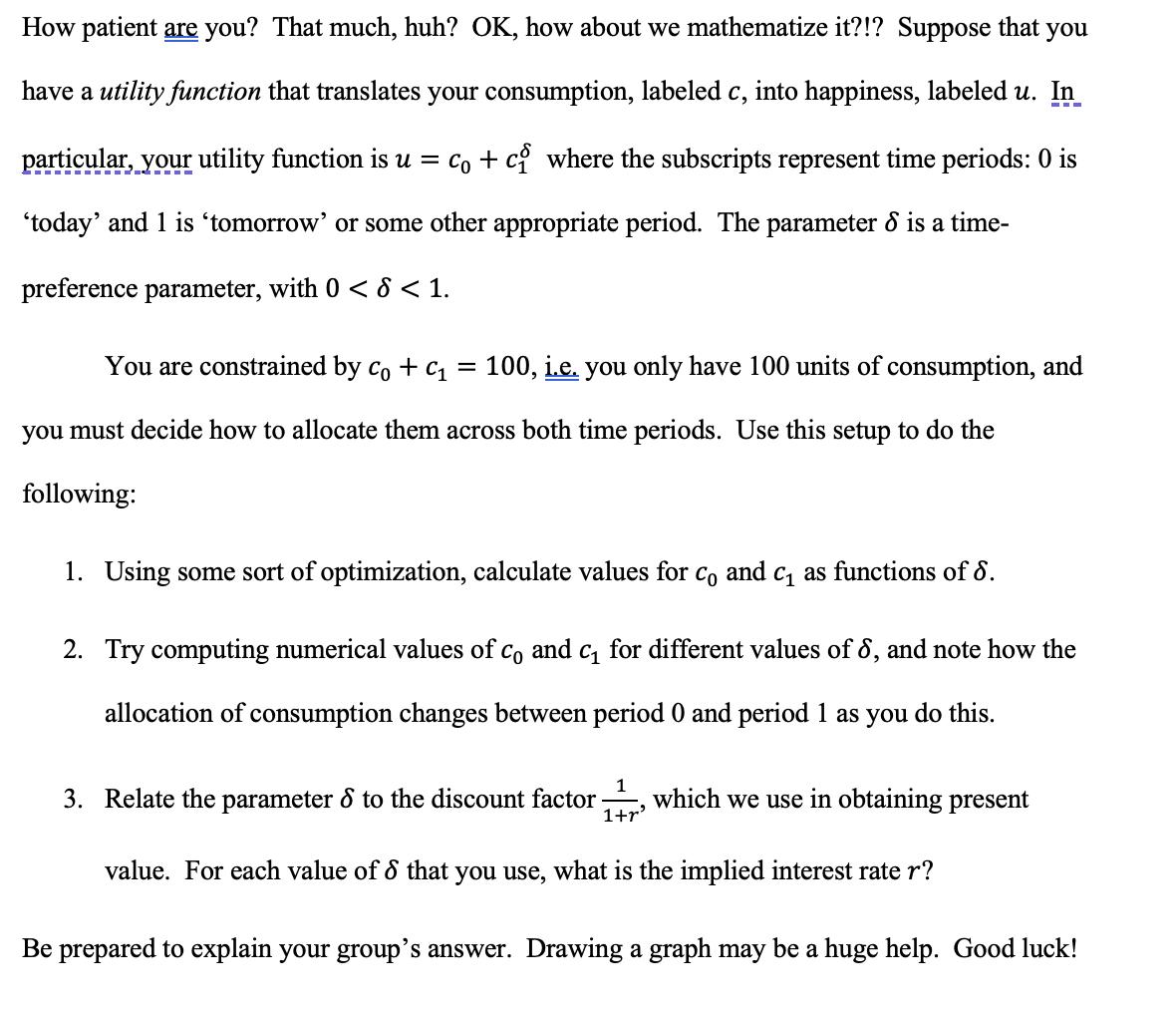Answered step by step
Verified Expert Solution
Question
1 Approved Answer
How patient are you? That much, huh? OK, how about we mathematize it?!? Suppose that you have a utility function that translates your consumption,

How patient are you? That much, huh? OK, how about we mathematize it?!? Suppose that you have a utility function that translates your consumption, labeled c, into happiness, labeled u. In particular, your utility function is u = Co + cf where the subscripts represent time periods: 0 is 'today' and 1 is 'tomorrow' or some other appropriate period. The parameter & is a time- preference parameter, with 0 < d < 1. You are constrained by co + C = 100, i.e. you only have 100 units of consumption, and you must decide how to allocate them across both time periods. Use this setup to do the following: 1. Using some sort of optimization, calculate values for co and c as functions of 8. 2. Try computing numerical values of co and c for different values of 8, and note how the allocation of consumption changes between period 0 and period 1 as you do this. 3. Relate the parameter & to the discount factor which we use in obtaining present 1 1+r' value. For each value of 8 that you use, what is the implied interest rate r? Be prepared to explain your group's answer. Drawing a graph may be a huge help. Good luck!
Step by Step Solution
★★★★★
3.36 Rating (149 Votes )
There are 3 Steps involved in it
Step: 1
Certainly lets mathematize this problem We are dealing with intertemporal consumption decisions unde...
Get Instant Access to Expert-Tailored Solutions
See step-by-step solutions with expert insights and AI powered tools for academic success
Step: 2

Step: 3

Ace Your Homework with AI
Get the answers you need in no time with our AI-driven, step-by-step assistance
Get Started


